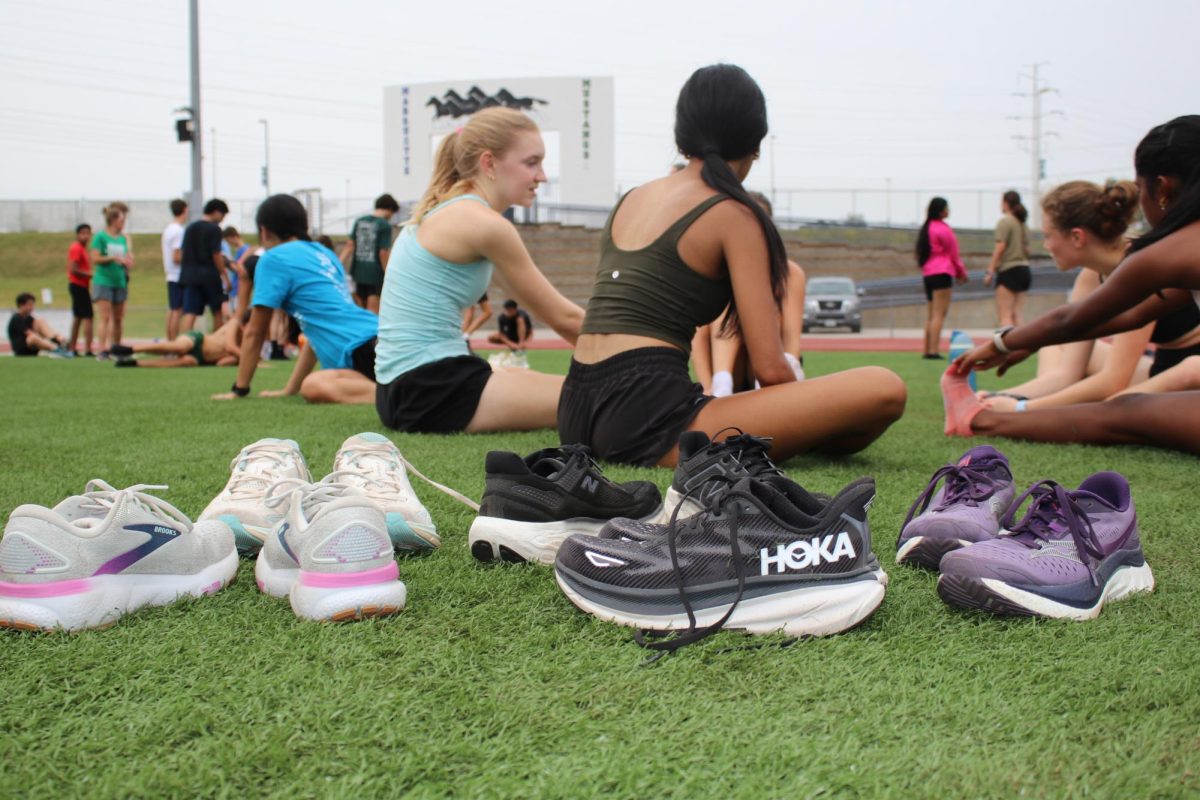Sierra Bunch, senior, laces up her pink-laced, gray Hokas with orange, pink and green soles when practicing for running.
She first heard about the shoes as a freshman and bought the shoes because she said they are useful for the events she participates in: triple jump, pole vault and sprints. She particularly likes the shoes because they have a large, supportive heel.
“I think the big heel is a lot helpful for the sprints because it’s still light but cushiony, and the jumps, it takes a little bit of the impact off,” Bunch said.
The average price for a pair of Hokas is $160.
“Yes [it’s worth the price], but for normal walking around, no,” Bunch said
Matt Nienhaus, math teacher and running coach, advises runners and other athletes to analyze their running style before buying a shoe. They can do this by visiting Big River Running Company or Fleet Feet
“I’m hoping that students select them because it’s better for their foot style, not because of the trend,” Nienhaus said.
Running style could include ankle and knee pronation (flat feet) and where on their feet they land while running.
“It’s dangerous because the wrong shoe to the wrong running style can lead to injuries like shin splints and IT band problems,” Nienhaus said.
Nienhaus said that a running shoe should only last about 400-500 miles. He also said shoes lose their support capabilities after about 5 years of running.
Mike Flynn, regional manager and program director for Big River Running, suggests that people interested in running or exercise should be fit by an expert at a local run specialty store.
Flynn said the Fit Specialists can measure a customers feet, observe their style of walking and analyze their foot structure, gait, pronation tendencies and pressure distribution when making a decision on what to buy.
“The staff at Big River Running acts as a ‘tour guide’ helping the customer understand their options and then make an informed decision on what to buy,” Flynn said.
Flynn also advises runners to bring in their old shoes so that the wear pattern can be analyzed and to have their foot really measured because their running shoe size is usually slightly larger than casual shoes.
“I encourage people to buy shoes based on the fit, feel, and function not solely because of the brand logo,” Flynn said. “That being said, some brands have characteristics that may consistently align with a runner’s foot shape or needs.”





